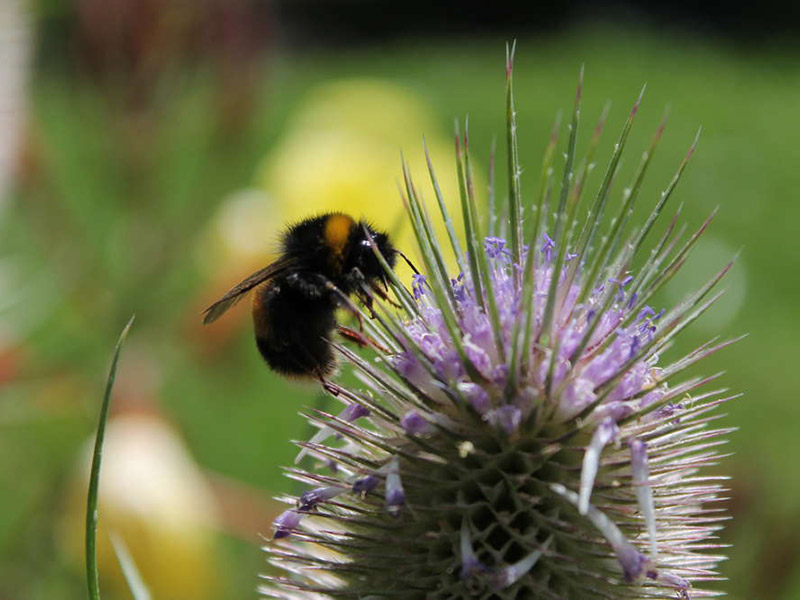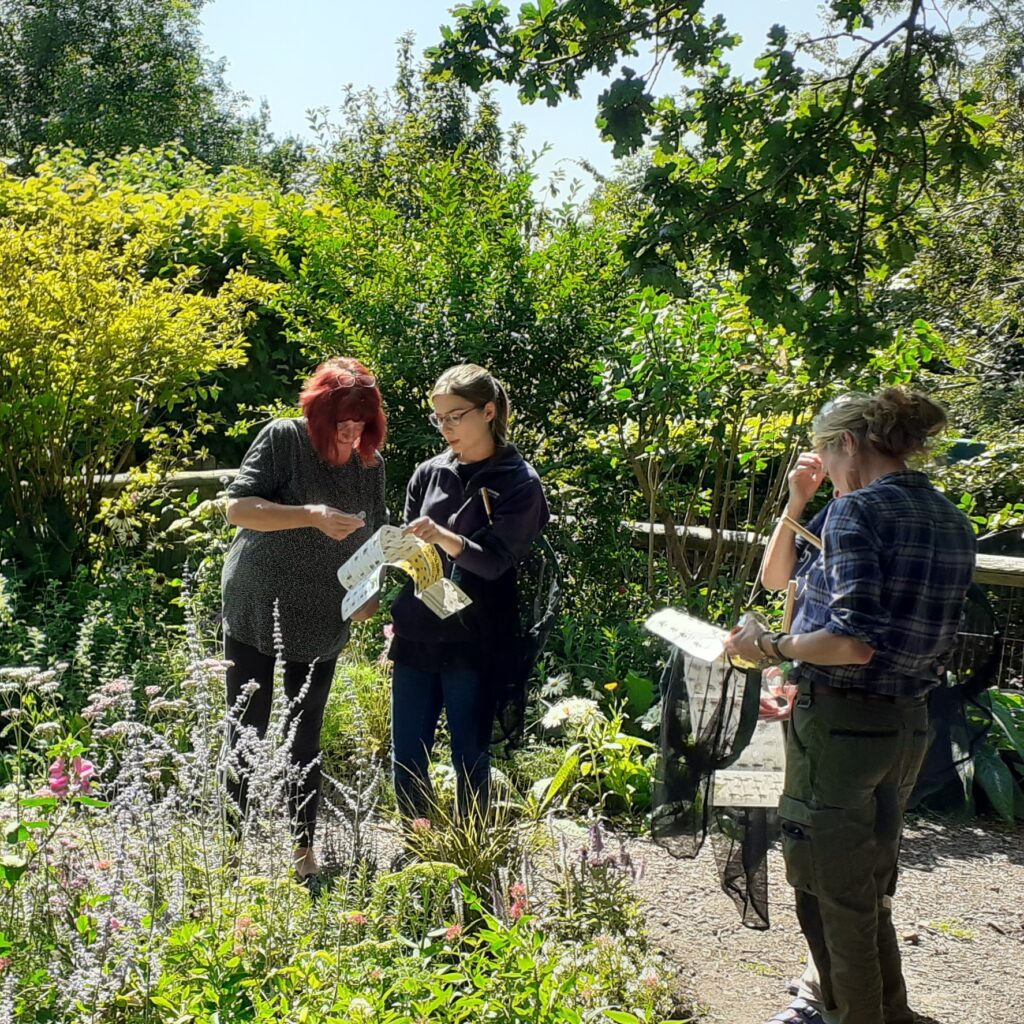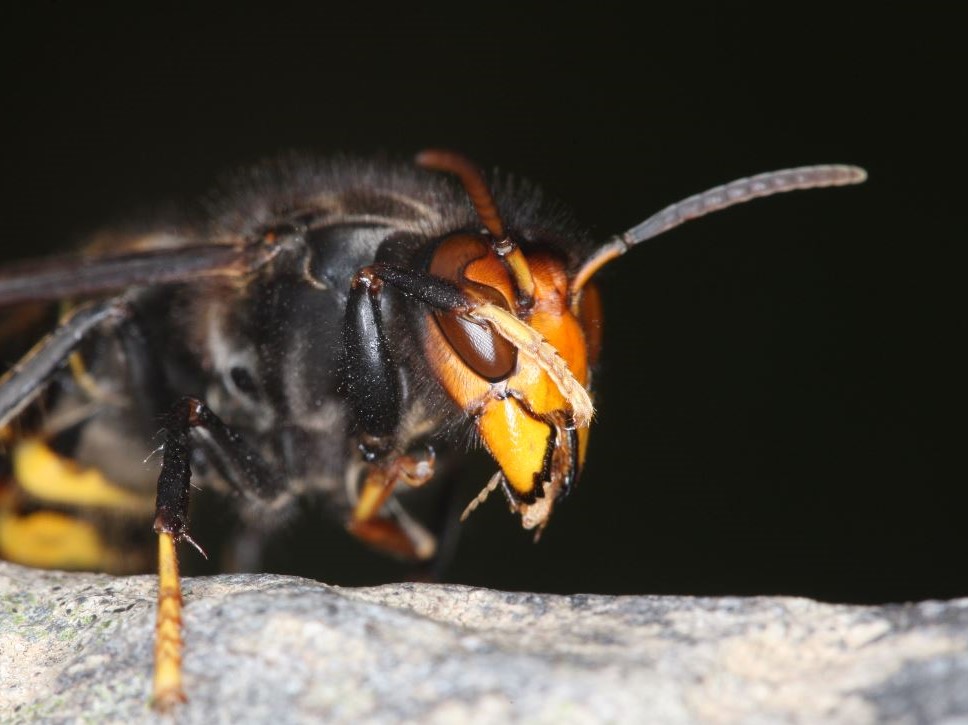
with the help of Amanda Millar and links to the Bumblebee Conservation Trust we have put together the following tips on how you can help the pollinators in your garden….
Providing Forage…
Growing flowers of different shapes and colours and flower depth to suit the different tongue lengths, throughout the spring, summer and autumn provide nectar and pollen to benefit all pollinators, as will avoiding any chemicals in the garden. Avoid the double flowers and hybrids, which have no nectar, smell or accessible pollen. Sow wildflower seeds and introduce wildflowers into your lawn.
Good bee plants include Geranium family; Borage family; Pea family; Dead-nettle family; Heather family; Currants; Teasel family; Knapweeds; Thistles; Globe-thistles; Alliums; Foxgloves; Penstemons; Ivy and Comfrey.
Trees and shrubs for Bees include Willows (early pollen and nectar); Hazel, Cotoneasters, Escallonias, fruit trees (Apples, Pears, Plums, Cherries etc), Sycamore, Horse Chestnut, Viburnums, soft fruits, Buddleia.
Late Autumn, Winter and early Spring can be difficult times for Bumblebee queens and Honey bees if increasingly mild weather brings them out, there is usually nothing for them to eat. Late flowering plants like Sedum and Aster are good, Winter flowering shrubs such as the Viburnhams (eg V. tinus and V. bodnantense ) and early Spring snowdrops and specie crocus which flower from the end of January are particularly helpful.
There is much info on the best plants for pollinators on the Bumblebee Conservation Society Website:
www.bumblebeeconservation.org/gardeningadvice/

Providing Nest Sites…
Most solitary bees excavate a tunnel in soil or take over a pre-existing hollow plant stem or build little mud nests in which they sock a pile of pollen, lay a single egg and seal it up. The following year the bees hatch out. Each species may only be on the wing for a few weeks in the year, with different species being seen at different time of year.
Encourage wild nest sites by leaving an area un-mown and allow the garden to be a little untidy to provide tussocky vegetation for bumblebees, and log piles for them to hibernate in. Sadly, Bumblebees do not seem to use above ground artificial nests much although providing underground nest sites has greater success.
Using bird boxes and mouse nests: The recently colonized Bombus hpnorum seems to like bird nest boxes, and although most other bumblebees prefer to nest underground in old mouse nests etc the Carder Bumblebees nest on the surface in piles of leaves or hay under shrubs. If you can provide plants with furry leaves such as Lamb’s ears (Stachys) they will harvest the white felt off the leaves to line their nests.
Some solitary bees excavate holes in bare sunny ground which needs to be undisturbed all year (apart from occasional mowing if necessary) so the young bees can hatch and fly out the following year. Providing boxes of soil does not seem to work.
For more info on what nests look like and how to create one visit: www.bumblebeeconservation.org/bumblebee-nests/
Making Bee Hotels…
The nests for solitary bees and solitary wasps are easy and fun to make, and fascinating to watch when in use. The most successful materials seem to be hollow reeds, bamboo canes cut to length, plant stems and holes drilled into logs or pieces of untreated timber.
These stems and holes need to be at least 15cm long. Any less than this and males are favoured which are unlikely to help the population increase. The smaller species will use small stems of about 4.5-5mm diameter, the larger ones 7-8mm (Red mason bees and leaf cutter bees), so offer a range of plant stem diameter and drilled holes. The stems, reeds and canes can be tightly packed in a tube such as sections of drainpipe, metal cans, plastic drinks bottles with ends removed or wooden boxes. This keeps the stems dry and protects from bird damage. If Great Tits are a nuisance then cover the hotels with wire mesh. Plastic tubes cause the nests to suffer from mould and fail. If drilling 15cm holes in logs is a bit of a challenge then stacking thin pieces of wood with 15cm holes grooved or routed into one face seem to be popular with bees. Paper or card tubes are more likely to be parasitized and so the bees do not hatch.
The bee ‘hotels’ need to be mounted south facing in full sun but sheltered about 1m – 1.5m off the ground. They should be left out between mid March and October but they can be taken into a cold shed for the winter and put out in the spring for the bees to hatch. The stems and tubes are often re-used but they will not reuse them once the canes have split.









